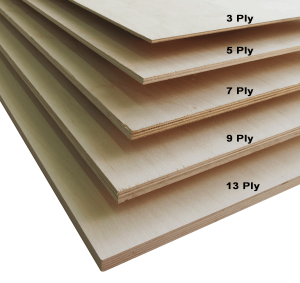Plywood is a necessity for many projects, from building cabinetry in the laundry room to building your dream gazebo in the backyard and when we buying furniture. If you’re not an experienced plywood buyer , You’ll find various prices matched with multiple materials, ply, sizes, veneers, grades, and more usage for fireproof plywood 9mm plywood price. Our ultimate guide to different types of plywood and the projects for which they work best should help you find the right kind for your needs.Will introduce to you below.
Types of Ply
A ply refers to a layer of veneer used to create plywood’s various thicknesses. Ply creates more thicker and board more stronger. Plywood has an odd number of plies and needs at least three plies. Most plywood shed is categorized as 3-ply, 5-ply or multi-ply,Although plywood can have any number of plies above three.
3-ply is one of the most common types of plywood. It is about 2 to 3 mm thick, looks more decorative than thicker plywood boards and beaded plywood.This kind has three layers of veneer and is layered enough to be strong and durable but can look more decorative than plywood with more plies, making it a good choice for indoor use.
5-ply is a versatile type of plywood. Use it indoors or outdoors, but avoid using for framing permanent structures. This is another common type of plywood used for projects that require less durability and strength than those needed for exterior use.
Multi-ply is comprised several veneers, usually seven or more plies to create an incredibly strong. This plywood is strong and durable enough for use in roofing, framing and other exterior, structural projects,exterior plywood home depot.
Grades of Plywood
We carry four grades of plywood: A, B, C and D. The grade refers to the quality and appearance of the plywood’s face and back veneers. A grade with the highest quality and most expensive, D is cheaper.
A grade plywood: This is the highest-quality plywood and therefore typically the most expensive, since the veneers features a smooth and can be easily painted. A-grade plywood is ideal for furniture or cabinet doors.
B grade plywood: B-grade plywood is slightly less smooth than A-grade plywood and has a solid foundation. But may have more repaired defects up to 1-inch across.
C grade plywood: This type of plywood has a few knots in its sheets that will need to be repaired. When appearance is not important, can choose this grade, such as for subfloors or garages.
D grade plywood: The cheapest type of plywood veneers that have not been repaired .
Advantages of plywood
- There is no sawing in the production process of plywood, and the utilization rate of wood is high, which can effectively save wood.
- The plywood is lighter in processing, clear in texture, good in bending resistance, not easy to deform, more convenient for transportation and construction, and has a good decorative effect.
- After being boiled, the plywood has strong weather resistance, is not afraid of high temperature, and has a long service life. It is widely used in households, ships, trains, etc.
Plywood materials are also generally cheaper than solid wood, and if you want decorative plywood or plywood veneer, its appearance isequally attractive.

